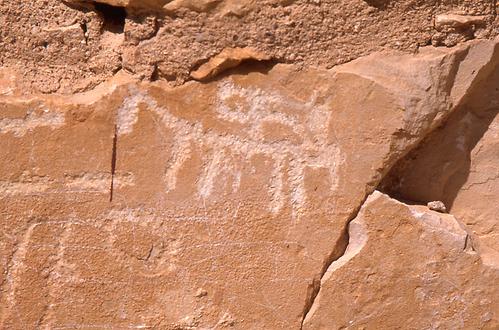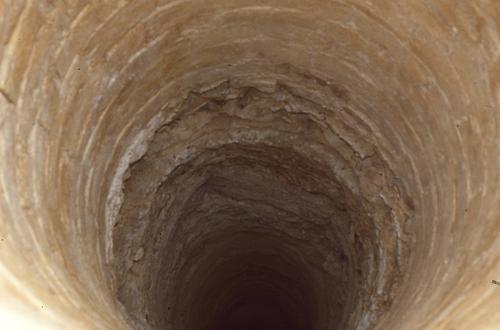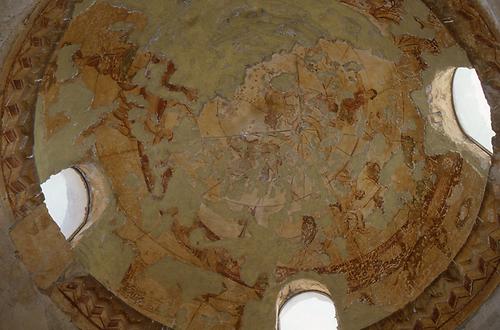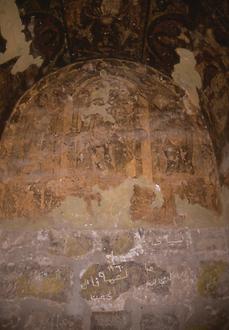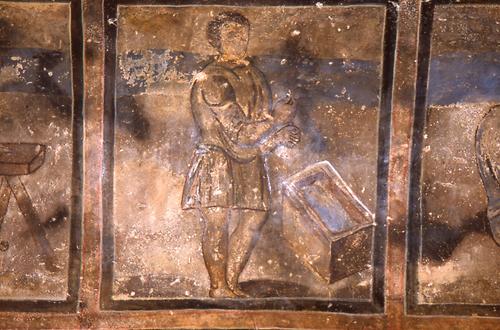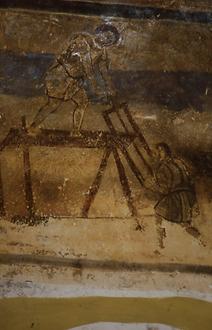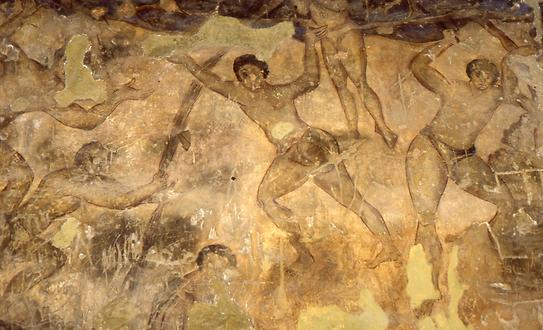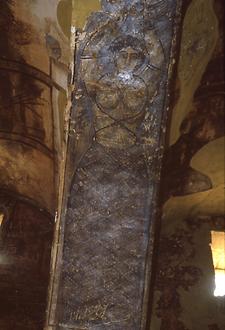Hunting castle Qusair el Amra in the desert of Jordan#
Discovered by the Austrian Alois Musil#
All photos were taken by the author 1985 and 1989. They are part of his archive "Picture-flood Jontes".

The small castle of Qusair el Amra is situated approximately 70 kilometres from the capital of Jordan, Amann, amidst the wilderness of sand and rubble. Its revealing Arabic name means „Small Palace of Amra“. Its construction and interior decoration date back to the beginning of the 8th century. Qusair el Amra is regarded as one of the first monuments of secular Islamic art. In 1985, the small but well-proportioned building was declared a World Heritage site by UNESCO.
An inscription which was discovered during the last restoration and previously unknown refers to the Umayyad Prince and the later Caliph Al Walid II as builder. The small castle offers all the luxury of the advanced Arab civilisation. At that time, Islam as a religion slowly created its own architecture and painting, freeing itself from Christian Antiquity. After hunting on horseback, huntsmen even refreshed themselves in a bath of then still Roman style, relaxed in a room similar to a small social hall and enjoyed the paintings which covered all walls.
In the course of time, the ruling class lost interest in this kind of entertainment. The small castle was simply forgotten, covered with sand which did not only hide it but it protected also its interior decoration. The Austrian Orientalist from Bohemia Alois Musil (1868-1944) re-discovered the castle in 1898. He was one of the most outstanding experts for the Arabic language and its dialects. He was also a theologian, geographer and professor at the University of Vienna. He was a personality with great potential and had a profound knowledge of the countries and people of Arabia. During the First World War, he was charged by the Austrian-Hungarian Empire to influence the Bedouin tribes which were allied with Turkey. He was in this function the Hungarian „Musil of Arabia“ and opponent of the British „Laurence of Arabia“, T.E. Lawrence. The Bedouin tribes were partly perssuade by him from collaborating with the British in the Near East against the Ottoman Empire.
Musil did not only discover Qusair el Amra, he freed it from darkness. He was also the first to conduct research, to publish about it, and to make it accessible to the amazed scientific world.
A deep fountain all the way down to the groundwater stream of the desert which feeds some oases supplied the bath with the necessary water.
In the interior, the wall paintings in fresco technique are most exceptional. The colour is applied on the still wet surface of the wall and can therefore soak into deeper-seated layers. This technique prevents the colour to peel off as it often happens with secco paintings. The walls and domes are entirely painted.
Today, the poor conservation status is not only due to the ravages of the time. The religious vandalism of fanatical Muslims and the vandalism of plebeian tourists did a lot of damage to the paintings.
The early date of origin indicates that the later stricter commandment not to admit depictions of living creatures such as humans, animals and plants was not enforced yet. For this very reason, pictures of hunting activities, bathing scenes, dancers and acrobats appear before the eyes of the visitors. The art-historically most interesting scenes are the scenes that show craftsmen at work.
The world of images of the entire interior decoration shows stylistic variety. No common style is recognizable. The impression is that the intention was to offer interesting impressions without any larger intellectual background. Continuous image fields alternate with representations of single figures or even just iamges like portraits of a face or head.
Hunting pleasures become apparent in dynamic depictions of gazelles and wild asses which were chased riding on horses.




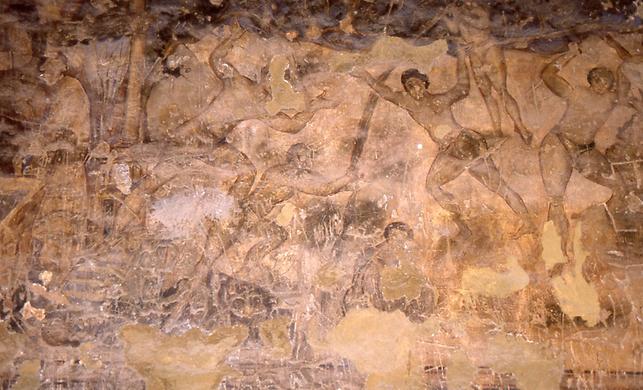

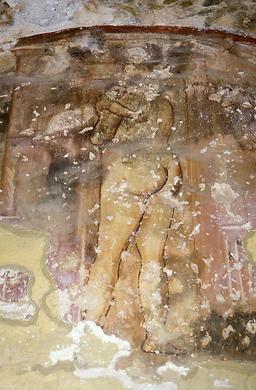
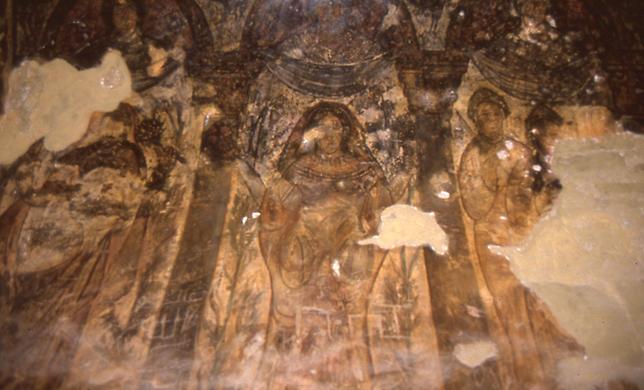
Thereafter, a refreshment was taken in the bath together with the harem. You meet nakedness as well as the elegance of music, dance and acrobatics.

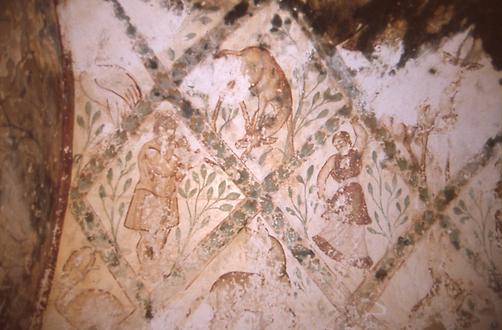
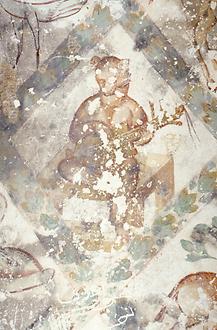
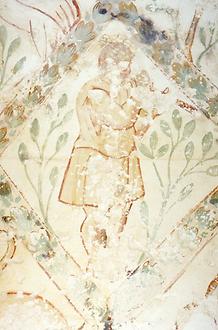
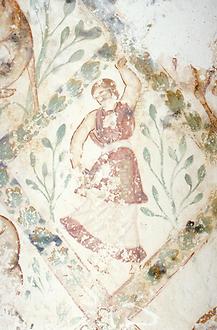
Bedouin hospitality takes you back into the present. A tent is pitched close to the Qusair. A family has settled here once again and probably keeps a vigilant eye on this unparalleled cultural treasure.

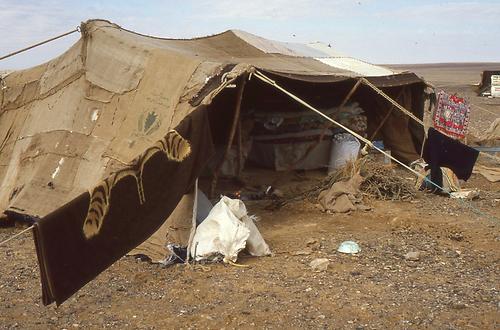

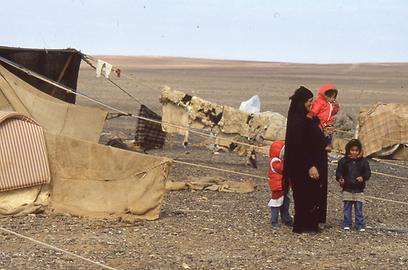
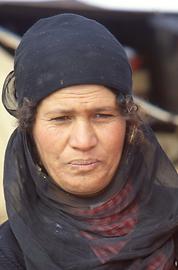
Their hospitality includes the traditionally prepared and then offered coffee.


